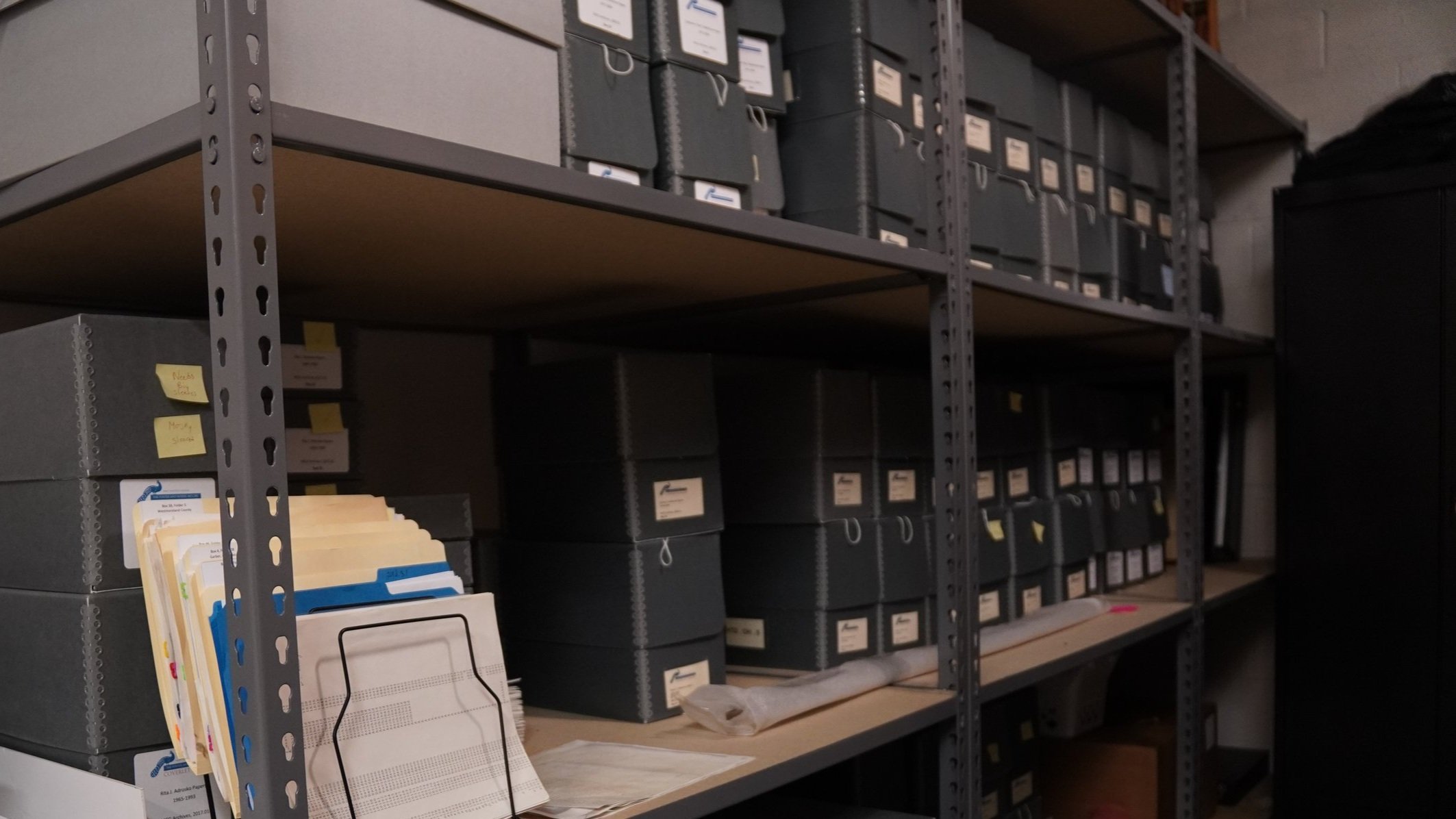
Research archives at the McCarl Gallery
Anderson-Hawthorne Textile Database
(Formerly the University of Maryland Textile Database)
In 1986, Katherine “Kay” Hawthorne joined textile historian Clarita Anderson in an endeavor to document Jacquard-woven coverlets. Over the years, the two women amassed a database of over 14,000 textiles. Originally housed at the University of Maryland, the database came to Saint Vincent College in 2009.
The McCarl Gallery is in an ongoing process of identifying and adding images into the database records. We are also adding new records of coverlets as we find them. It is a constant work in progress, but in the meantime, the database is available for public view.
Research papers
The McCarl Gallery houses three research collections relating to coverlet weaving and jacquard weaving. Finding aids to their papers are available online and may be downloaded (see below). If you have a request for information from these research collections, please consult the finding aids or contact the curator.
The Papers of Clarita Anderson & Katherine Hawthorne
In addition to their database, Clarita Anderson and Kay Hawthorne both gave their personal research collections to the McCarl Gallery in 2009 and 2010, respectively. The papers of these two women contain unpublished manuscript, a massive collection of research on over 9,000 weavers, and their own personal correspondence and research files.
The Clarita Anderson Papers are stored in 110 boxes. They are organized into the following sections: I. Coverlet Database; II. Weaver Database; III. Weaver Files; IV. Institutions; V. Patterns; VI. Correspondence; VII. Research; VIII. American Coverlets and their Weavers book research; IX. Writings; X. Personal; XI. Publications; XII. Textile Class Materials; XIII. Foster and Muriel McCarl, 2000-2005; XIV. Images; XV. Miscellaneous; XVI. Legal Size Material; XVII. Ebay
The Hawthorne papers are stored in 14 boxes, organized into the following sections: I. Weavers; II. Institutions; III. Patterns; IV. Publications and Correspondence
The Rita J. Adrosko Papers: 1965-1993
Rita J. Adrosko is the Curator Emerita of the Textile Collection at the National Museum of American History, Smithsonian Institution, in Washington, D.C.
Her interest in the Jacquard mechanism began in the late 1960s while planning a new textile exhibit for the National Museum of History and Technology, as the National Museum of American History was then called. She was responsible for refurbishing the Museum’s 19th century French Jacquard-equipped loom for exhibit and for demonstrating weaving on the loom after the exhibit opened. Knowing little about the history or operation of the Jacquard loom and finding little fully-documented work about Jacquard’s life or his invention, she began to do extensive research on both the inventor and the mechanism. Her research led her to spend six weeks in Lyon and Paris in 1971 and 1972, visiting libraries, archives, and museums. She researched 19th century weaving and 18th and 19th century weaving industries in Lyon, Paris and other French weaving centers, as well as in London. She also visited places such as Jacquard’s burial place and sought photographs and documents showing examples of Jacquard weaving.
What Can I Find?
The collection contains Adrosko’s research files on Joseph-Marie Jacquard and the Jacquard loom. Significant items include copies of material gathered by Adrosko in the course of visits to the library of the Musée Historique de Tissus, the Archives Nationales Françaises, the Bibliothèque Nationale, the museum of the Conservatoire National des Arts et Métiers, and other libraries and archives in Paris, Lyon and London.
The collection includes numerous notes and information written by Adrosko herself in the course of her work. It contains sections on drawlooms and other pre-Jacquard devices; Jacquard’s life and work; the Jacquard mechanism in France, Britain, Germany, and America; applications and products; and the silk industry in general in France and Britain. It also contains copies of British patents, 1818-1868, for Jacquard and related looms, as well as copies of numerous articles about the silk industry in general and Jacquard in particular. Many files contain photographs.
The collection is contained in 35 boxes, organized into the following sections: I. Pre-Jacquard/Jacquard; II. Treadle/Non-Treadle Looms; III. Early Developers of Jacquard Mechanisms; IV. Silk Industry; V. Tapestry; VI. Patents; VII. Bibliography Material; VIII. Correspondence; IX. Manuscripts; X. Images; XI. Notes; XII. Oversize Material; XIII. Miscellaneous; XIV. Research Note Cards
Using the Archives and Special Collections
The McCarl Coverlet Gallery is open to the entire Saint Vincent community, alumni, and the general public. If you are interested in conducting research at the McCarl Coverlet Gallery, please contact the curator prior to your visit. Researchers must present a valid form of identification and fill out a research agreement form. The McCarl Coverlet Gallery reserves the right to limit the use of fragile, deteriorating, or rare material that may be further damaged by handling; however, every attempt will be made to make collections available.
Collections are to be used only in the designated research area under the direct supervision of the Curator.
Patrons are required to use pencils while working with collections.
Personal computers are permitted in the research area.
Photocopying is permitted at the discretion of the Curator.
